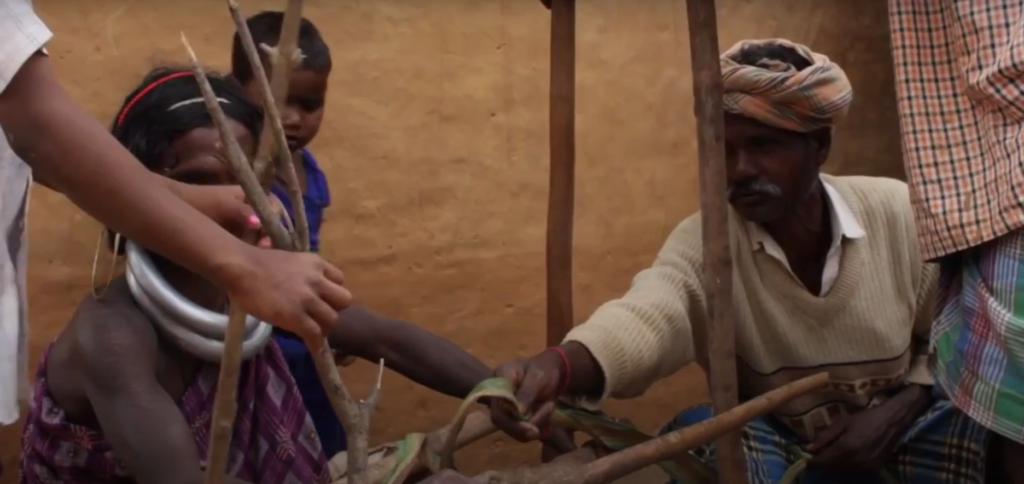
If you come across a village sitting in nature’s lap where the people seem enriched with unique but welcoming culture then you are in a Gadaba Village. It is a tribe settled in Andhra Pradesh and Orisha. It is known for its love for nature and mystical ways to celebrate festivals. The Gadabas speak the Gutob or Ollar language that originated from Munda. However, the younger generation has also learned Oriya and other dominant languages in their region. The elders are the pillar who are keeping the Gadaba culture alive. Let’s find out where this Gadaba tribe came from?
The Story Of The Gadaba Tribe
So, here is a surprise for you. There is not one but two stories of Gadaba. Some believe the former one is right and others believe the latter one. We will go through each story and let you decide.
- Gadaba tribe’s existence can be traced back to the period of Ramayan. The tribe used to live on the banks of the river Godavari. But as soon as they suspected a lack of resources, they shifted to Nandapur, Orissa. Their main target was to settle in Gadabapada village in Lamatput block of Koraput. Until they found a resourceful land that can be efficiently cultivated they kept moving and settling in different parts of the region.
- Gadaba tribe is a breakout group from the Munda tribe. Munda tribe were the original inhabitants of Bindhya hills. The Gadaba tribe migrated to Visakhapatnam first and then found a home in Koraput.
Both of the stories have one thing in common the requirement of a riverbank and love for the fertile land. Gadaba believed in respecting and nurturing mother nature and that is why the early settlements failed. They were always looking for pristine land for farming, hunting, and other labor jobs for their survival.
The Dance Of The Gadaba Tribe
Imagine it’s a Gadaba festival. The women are wearing Kerang Saree and are adorned with brass and aluminum ornaments. The folk music starts playing with mesmerizing musical instruments such as flutes, Tamak, drums, Madal, Mahuri, and Tal Mudibaja. The women come together and with the spirit of joy, they start performing the famous Gadaba dance, Dhemsa. They form a circle and keep rotating while grooving on the folk songs. This is what a Gadaba dance performance looks like. Sometimes there may be women performing in pairs with a unique positioning. They rest their hands on the wrist of their partners giving an elusive look to the dance. Dhemsa is a celebratory dance that is performed on different occasions on different songs written for the given holiday.
The Festivals Of Gadaba
Gadaba tribe celebrate festivals with a mixture of emotions. They hold sincerity and devotion in their hearts but at the same time, they have fear. Thus, the date of every festival is decided by the Naik, Pujari, and Dissari after careful evaluation of the season. Their main festivals include Chaita Parab, Bandapana Purab, Pusha Parab, Dasahara Parab and Guta Parab. They enjoy the festivals with dance, music and worshipping God. They also perform rituals to free the spirits of the ancestors also known as Dumas.
The Gods Of Gadaba
Thakurani is the superior goddess in Gadaba. She is worshipped in the form of slabs of stones. After her, there are several clan deities who are worshipped on several occasions. Along with this, Gadaba also worships mother nature. They build a raised platform under the Banyan tree in their village and call it a Sadar. Thus, Gadabas celebrate various agricultural festivals to pray for healthy crops.
Gadabas have a special place for nature in their tribe. They surround themselves with trees such as Banyan, Mango, and Jackfruit. They might not be wealthy but they have a rich culture to take forward. There are 5 sub-groups in the Gadaba tribe- the Bodo Gadaba, the Sano Gadaba, the Parenga Gadaba, the Ollar Gadaba and Kapu Gadaba. Each one has its unique quality but is connected by the love of nature and the culture. Gadabas have a treasure of art and culture and they will welcome you with warmth and gifts. So, if you are planning to visit any Gadaba village remember one thing, they only eat thrice a day and a rice-heavy diet. Also, learn to wrap the Kerang sarees so that you can fit in and enjoy the Dhemsa dance.
